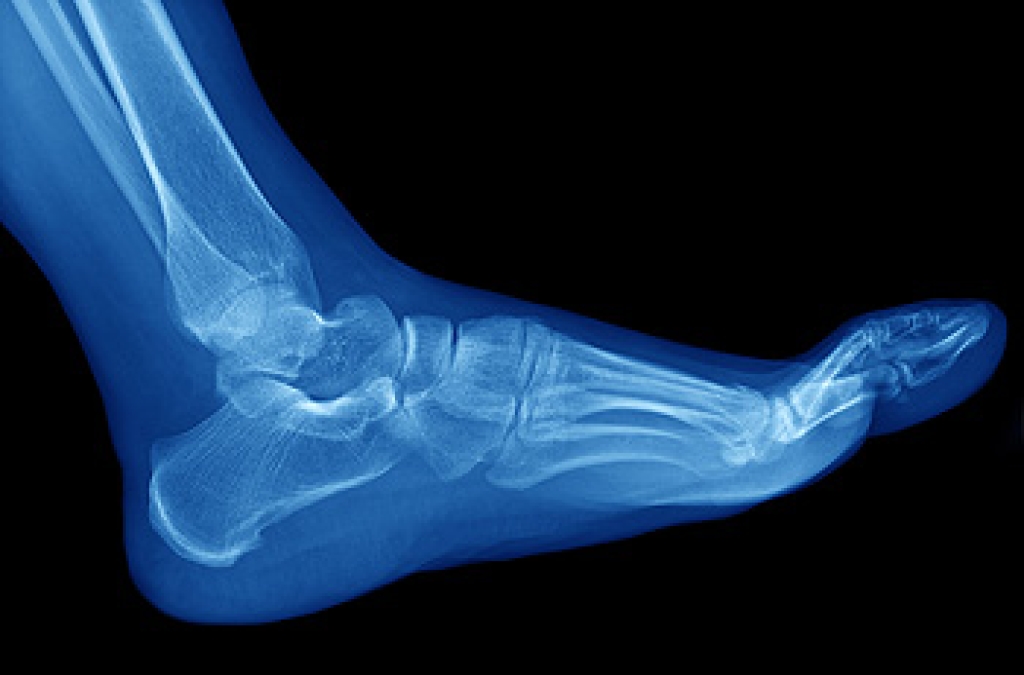 One of seven tarsal bones in the foot is referred to as the cuboid bone. It is found on the outside of the foot, has six sides, and resembles a cube. It enables the foot to maintain stability, and can be partially responsible for distributing body weight. The cuboid bone resembles a pulley, and functions with other bones in the foot. The condition that is known as cuboid syndrome commonly affects athletes and ballet dancers. These groups of people may be prone to ankle sprains, and as a result, the cuboid bone may become injured. Mild relief may be felt when the affected foot is elevated, and it may be beneficial to wrap an elastic bandage around the foot which can help to stabilize the ankle. If you have cuboid syndrome, please consult with a podiatrist who can effectively treat this ailment as quickly as possible.
One of seven tarsal bones in the foot is referred to as the cuboid bone. It is found on the outside of the foot, has six sides, and resembles a cube. It enables the foot to maintain stability, and can be partially responsible for distributing body weight. The cuboid bone resembles a pulley, and functions with other bones in the foot. The condition that is known as cuboid syndrome commonly affects athletes and ballet dancers. These groups of people may be prone to ankle sprains, and as a result, the cuboid bone may become injured. Mild relief may be felt when the affected foot is elevated, and it may be beneficial to wrap an elastic bandage around the foot which can help to stabilize the ankle. If you have cuboid syndrome, please consult with a podiatrist who can effectively treat this ailment as quickly as possible.
Cuboid syndrome, also known as cuboid subluxation, occurs when the joints and ligaments near the cuboid bone in the foot become torn. If you have cuboid syndrome, consult with Gary Saphire, DPM from Parkway Podiatry. Our doctor will assess your condition and provide you with quality foot and ankle treatment.
Cuboid syndrome is a common cause of lateral foot pain, which is pain on the outside of the foot. The condition may happen suddenly due to an ankle sprain, or it may develop slowly overtime from repetitive tension through the bone and surrounding structures.
Causes
The most common causes of cuboid syndrome include:
- Injury – The most common cause of this ailment is an ankle sprain.
- Repetitive Strain – Tension placed through the peroneus longus muscle from repetitive activities such as jumping and running may cause excessive traction on the bone causing it to sublux.
- Altered Foot Biomechanics – Most people suffering from cuboid subluxation have flat feet.
Symptoms
A common symptom of cuboid syndrome is pain along the outside of the foot which can be felt in the ankle and toes. This pain may create walking difficulties and may cause those with the condition to walk with a limp.
Diagnosis
Diagnosis of cuboid syndrome is often difficult, and it is often misdiagnosed. X-rays, MRIs and CT scans often fail to properly show the cuboid subluxation. Although there isn’t a specific test used to diagnose cuboid syndrome, your podiatrist will usually check if pain is felt while pressing firmly on the cuboid bone of your foot.
Treatment
Just as the range of causes varies widely, so do treatments. Some more common treatments are ice therapy, rest, exercise, taping, and orthotics.
If you have any questions, please feel free to contact our office located in Brooklyn, NY . We offer the newest diagnostic and treatment technologies for all your foot care needs.



